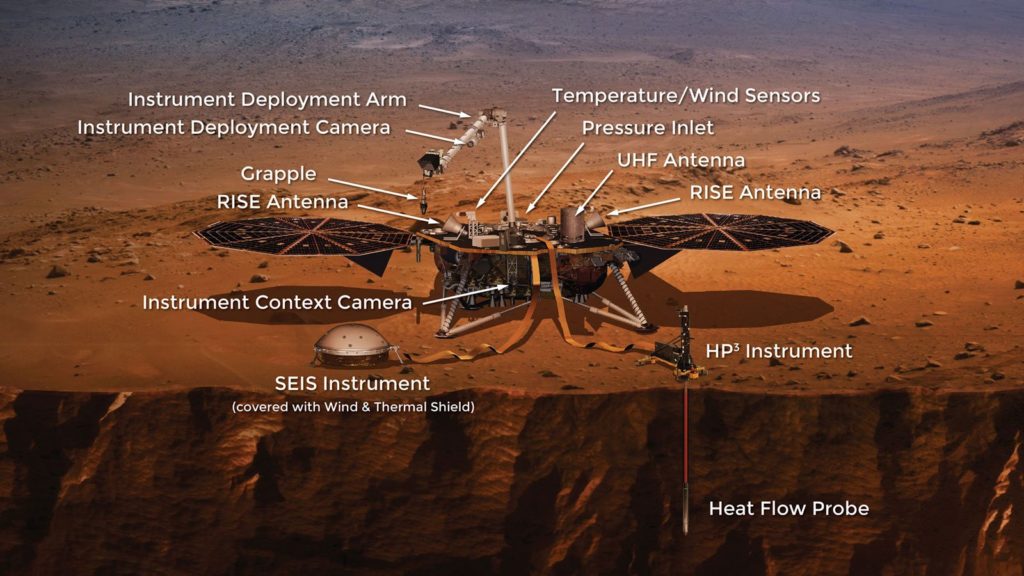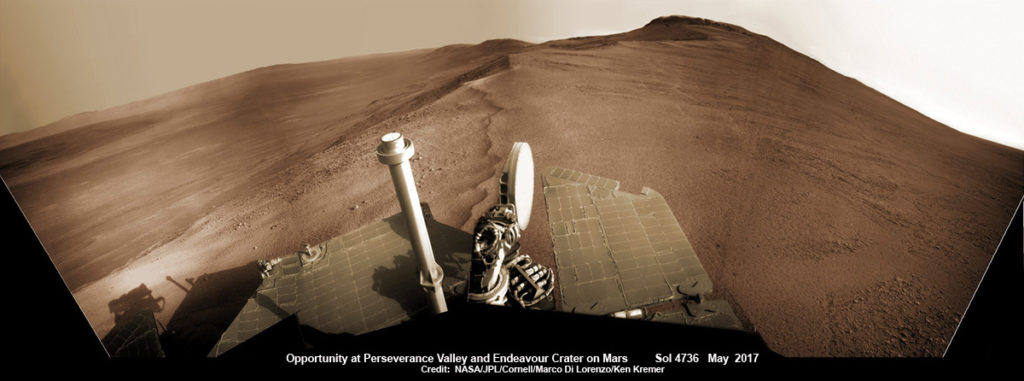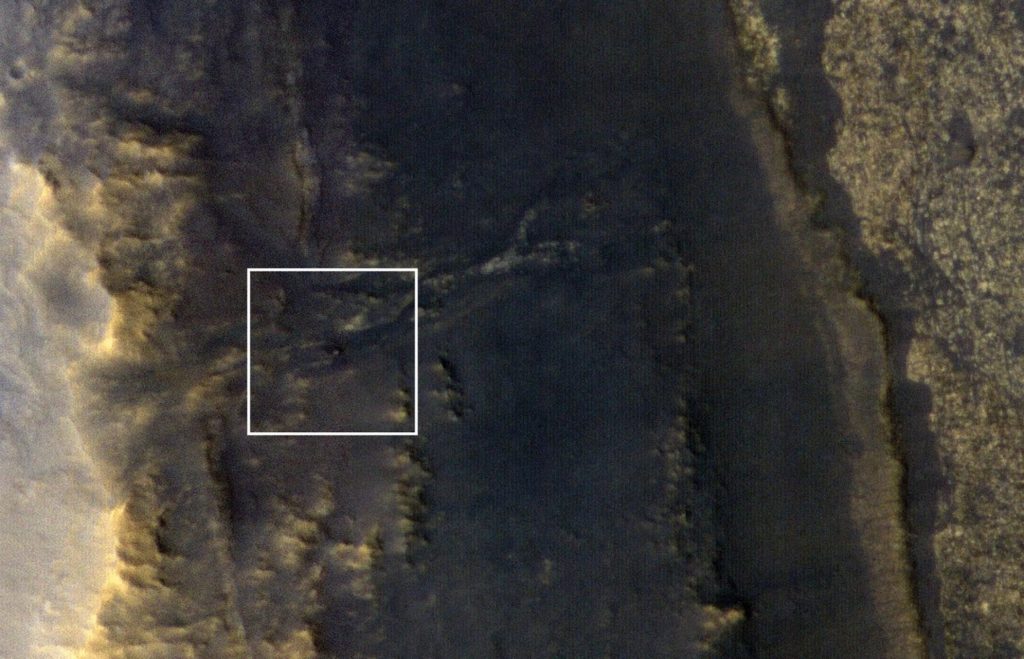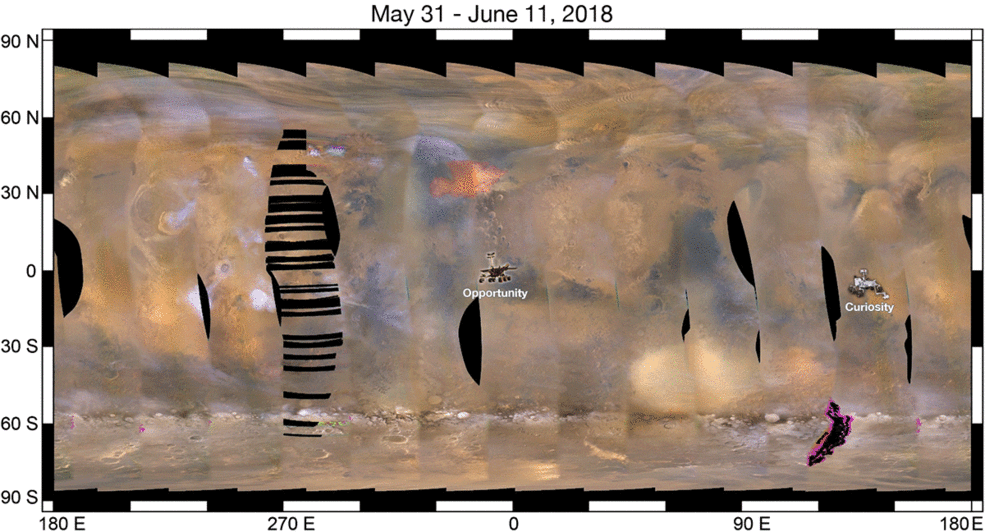Ken Kremer — SpaceUpClose.com — 29 October 2018
CAPE CANAVERAL,
FL – With the famous but aged solar-powered Opportunity Mars rover “still silent” over 4 months after a global dust
storm interrupted all communications, NASA is focusing resources on the imminent arrival of InSight – its next Red Planet mission scheduled to land in 4 weeks –
just days after Thanksgiving.
“No word back
from Mars from Opportunity,” NASA Chief Scientist Jim Green told Space UpClose today
Oct. 29 in an up to the minute report – confirming the unfortunate reality of continuing
dead silence.
Not a chirp has
been heard from the nearly 15 year old gold cart-sized Red Planet robot since the last signal – and sign of life
– was received on June 10.
“Still
No Signal From Opportunity” the JPL (Jet Propulsion Laboratory) team – which
manages the mission for NASA – wrote in the latest mission status update.
Thus NASA is marshalling its forces towards InSight –
speeding to Mars and a ‘do or die’ landing on Nov. 26. There are no second
chances or scrub turnarounds.
“We have to turn our attention soon to safely
landing InSight,” Green told me.
“That has to be our top
priority!”
NASA is maximizing the chances for a successful
touchdown of this crucial mission which will listen for the ‘heartbeat’ of the Red
Planet.
because a potentially favorable “windy period on Mars — known to Opportunity’s team as
“dust-clearing season” — occurs in the November-to-January time
frame and has helped clean the rover’s panels in the past.”
progress of the listening campaign, NASA will continue its current strategy for
attempting to make contact with the Opportunity rover for the foreseeable
future. Winds could increase in the next few months at Opportunity’s location
on Mars, resulting in dust being blown off the rover’s solar panels. The agency
will reassess the situation in the January 2019 time frame,” NASA said in a new statement issued today.
Martian dust storm that gradually encircled the Red Planet started in late May whipping
up dust that blocked Opportunity’s solar arrays from generating power and
charging the life-giving batteries – thereby cutting off all communications
with Earth from the essentially dead robot.
when NASA began an active listening campaign scheduled to last 45 days. NASA has now extended the sweep and beep
campaign while giving “top priority’ to ensuring a successful InSight touchdown.
is can she rise from the dead like Lazarus and ‘phone home’? Or is she
permanently silenced?
unknown as is the amount of accumulated dust on the solar panels.
and multiple times per day – a process
known as ‘sweep and beep’ – hoping the six wheeled robot will wake up.
employing a combination of listening and commanding methods in case Opportunity
is still operational,” NASA said in a statement.
a layer of dust deposited on the rover’s solar panels by the recent global dust
storm is blocking sunlight that could recharge its batteries. No one can tell
just how much dust has been deposited on its panels.”
news is that NASA’s long-lived Opportunity rover finally emerged as a tiny blip
in a new view taken from orbit as the global Martian dust storm that encircled
the Red Planet and cut off all communications with Earth since June, gradually
subsides. The view has clarified just
enough for the golf cart sized robot to at last be seen again.
on Sept. 20, 2018 from an altitude of about 166
miles (267 kilometers) above the Martian surface. The white box marks a
154-foot-wide (47-meter-wide) area centered on the rover which is barely
noticeable as a small whitish splotch against the dark red contours of the Red
Planet.
been descending down and exploring Perseverance
Valley located along the eroded western rim of the gigantic 22-km diameter (14
mi) impact crater named Endeavour.
in 2003, landed in 2004 and has been making breakthrough science and
exploration discoveries regarding flowing liquid water and habitable
environments potentially conducive to life on Mars ever since during its
utterly remarkable 14.5-year-long overland trek across the 4th planet from the sun.
enormously that it covered more than 15.8 million square miles (41 million
square kilometers) – about the area of North America and Russia combined.
that it effectively turned day into night for Opportunity, which is located
near the center of the storm, inside Mars’ Perseverance Valley.
Because the solar
powered Opportunity rover charges her batteries, instruments and heaters via
sunlight impinging on her solar arrays, No sunlight means no production of
electrical power to run her systems and subsystems.
Although Opportunity was only warrantied
for “90 Sols” of operation, it was enjoying its 15th year of
continuous operations on the frigid alien world – until the dust storm!
“Perseverance Valley” is an
ancient fluid-carved valley “possibly water-cut” that could hold groundbreaking
clues to the potential origin and evolution of life on Mars – if it ever
existed.
2018, long lived Opportunity has survived or experienced over 5250 Sols (or
Martian days) roving the harsh environment of the Red Planet.
228,771 images and traversed over 28.06 miles (45.16 kilometers) – more than a marathon.
Boeing, Lockheed Martin, Northrop Grumman and more space and mission reports direct
from the Kennedy Space Center, Cape Canaveral Air Force Station, Florida and
Wallops Flight Facility, Virginia.
Stay tuned here for Ken’s continuing Earth and Planetary science and human
spaceflight news: www.kenkremer.com
–www.spaceupclose.com – twitter @ken_kremer – email: ken at kenkremer.com
Dr. Kremer is a research scientist and journalist based in the
KSC area.
Ken’s photos are for sale and he is available for lectures and outreach events








